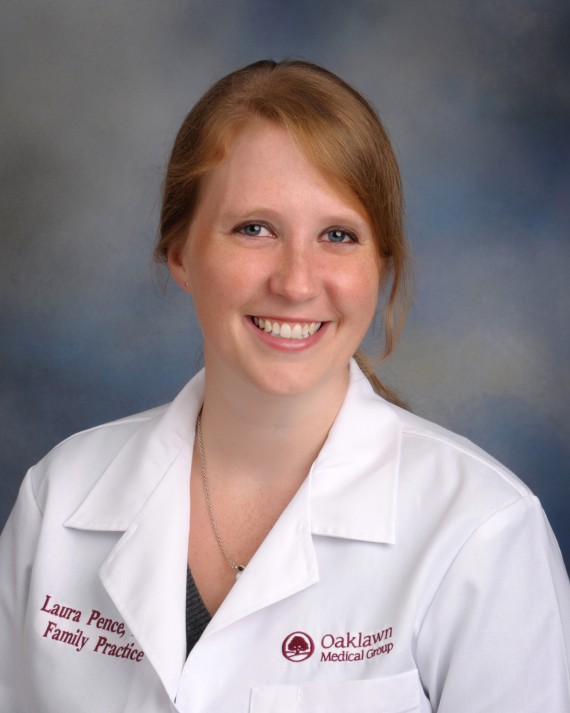
Now Scheduling Primary Care Appointments Online. Book Now.
Breastfeeding 101

Having a baby is a wonderful thing! It also comes with its fair share of challenges, like breastfeeding. For some women, breastfeeding seems to be a cakewalk. For others, the struggle is real! Breastfeeding not only has health benefits, but it provides great bonding time between mom and baby. On the flip side, for women who want to breastfeed and experience difficulties doing so, something that has so many positives can turn into a major source of frustration.
It’s important to mention that you have many options when deciding how to feed your baby. Some parents choose to breast feed, some choose formula and some choose a combination. We are supportive of any choice you make as a family, but we do advocate for breast feeding because it has so many wonderful health benefits for you and your newborn. For this reason, we’re going to focus on breastfeeding, its benefits, and some things you can do to set yourself up for success so that you can enjoy this special time of your baby’s life.
1. Health Benefits
One of the major reasons to consider breastfeeding is because of the wide range of health benefits it provides for your baby. We won’t list them all, but some of the health benefits of breast feeding include:
- With a perfect mix of vitamins, protein and fat, breast milk provides the ideal nutrition for infants.
- Supplies baby with antibodies to help fight off infection.
- Physical closeness, skin-to-skin touching and eye contact help baby and parents bond. If you aren’t able to breast feed, I still encourage skin-to-skin contact because of this bonding benefit.
- Decreases risk of asthma, allergies, ear infections, colds, less doctor visits and fewer hospitalizations.
- Decreases risk of baby being overweight.
- Decreases risk of SIDS.
Breast feeding isn’t just great for baby. It also has many pros for mom as well, such as:
- Helps burn extra calories and shed that baby weight.
- Decreases post-partum bleeding by releasing oxytocin and having your uterus contract (which means that you might experience more cramping during feedings!).
- Decreases risk of breast and ovarian cancer.
- Provides great bonding with infant.
- Costs less money (formula is expensive!).
2. Do I have enough milk?
If you’ve decided that you want to breast feed your baby, you might be feeling unsure about whether or not you will have enough milk to do so. This is a very common concern as a lot of women worry about milk supply. And if you’re a first-time mom, you might be feeling unsure about this whole process entirely! In an effort to help put you at ease by filling you in on what to expect, below is a basic outline of what the typical process looks like after your baby is born.
- Initially after delivery, you make colostrum, which is thick, yellow and scant, but for MOST babies this is enough milk. It’s common for babies to lose weight in the first 3 to 5 days of life regardless of whether or not they’re breast feeding or formula feeding. When this happens, don’t automatically blame yourself because you think you’re not making enough colostrum. We expect baby to lose a few pounds (within reason, of course).
- Most women get their milk supply 3-5 days after birth, but some may take longer.
- The best way to know if your baby is getting enough milk is to see if baby is making enough wet diapers and gaining an appropriate amount of weight. How do you know if they’re on track? A good guideline is that your baby should be urinating once for each day old up to 7 days (ex 3 days old = urinating at least 3 times; 4 days old = urinating at least 4 times). They should be pooping at least once daily, but most breast fed babies poop after each feed (this is usually a soft, yellow, seedy stool after 3-5 days).
- We usually see breast fed babies 2-3 days after discharge for a weight check. While both breast fed and formula fed babies alike lose a little weight, we like this to be less than 10% of their birth weight. If baby is losing too much weight, we will often supplement with formula. If this is necessary, we can help you supplement without using a bottle (cup feeds, syringe feeds, etc) in order to avoid nipple confusion.
3. How can I encourage milk production?
There are several different techniques (all of which are easy) that you can use to help boost your milk production. Some of these include:
- Immediately after delivery, keep baby skin-to-skin as long as baby appears healthy. Keep baby skin-to-skin until baby has latched and started nursing (usually within the first hour of life).
- Frequent skin-to-skin contact is important! Not only for bonding reasons, but it can help with your milk supply.
- Nurse frequently or “on demand.” Most newborns need to nurse every 1-3 hours
- Keep baby in your room during the hospital stay. If you’re really tired, it is perfectly okay to have baby go to the nursery so you can rest, but keeping baby bedside and being able to react to any of baby’s needs are helpful in establishing your milk supply.
- Drink A LOT of water. Hydration is key to milk production.
- Eat a healthy, well-balanced diet with about 500 calories more than your regular diet.
- If by day 3-5 your milk hasn’t come in, sometimes pumping after feeds helps establish supply. In a typical situation, I would recommend that you hold off on pumping until about 2-3 weeks after delivery in order to prevent an oversupply.
- Take note: there are a lot of recommendations out there that are anecdotal and not necessarily evidence based. This is includes eating oatmeal, eating lactation cookies (main important ingredients are Brewer’s Yeast, Flax seed and oatmeal), Fenugreek supplements, and Mother’s Milk Tea.
4. What supplies do I need?
If you’re able to, stock up on all of your breast feeding supplies prior to the arrival of your baby so that you’re fully prepared once baby comes! The items you should have on your shopping list include:
- A pump and pump parts. Try your best to familiarize yourself with using your pump prior to delivery (trust me, you will thank yourself later). We usually give you a prescription for a breast pump in your third trimester if you are planning to breast feed.
- Nursing bras and nursing camisoles can help with easily accessible access for breast feeding (not to mention, they’re usually pretty comfortable). Make sure you pack these in the bag you bring to the hospital!
- Nursing breast pads. Ladies, these are kind of a must if you want to save yourself the embarrassment of leaking through your shirt! There are many brands – some disposable and some re-usable. These help soothe sore nipples and absorb leaking milk, which usually starts when your milk comes in.
- Lanolin cream to apply to sore nipples (a reality of breast feeding).
- You don’t always know when baby is going to be hungry and it’s pretty much guaranteed that baby is going to want to feed at some point when you’re in public. Some women like to have a nursing cover or nursing scarf for modesty when hunger strikes in public situations.
5. How much is this going to hurt?
Some nipple pain is a common side-effect of breast feeding, but it shouldn’t be an experience that leaves you crying in pain every time. Here’s what you can expect:
- When you first start nursing, you will most likely have some nipple pain and tenderness.
- Usually latch-on pain lasts about 30 seconds and is mild to moderate. It usually peaks around days 3 of life. Remember, both you and baby are figuring each other out so give yourselves a little bit of time to master the breast-feeding dance.
- If pain is severe and/or lasts the entire nursing session, this is usually not normal. This can be a sign of incorrect/shallow latch or other issues.
- Other reasons women may have nipple/breast pain could include yeast infections, mastitis, engorgement, blocked duct. Please talk to your doctor or a lactation consultant to assist you if you are having problems
I hope this quick guide to breastfeeding will help put you at ease as you set you and your baby up for success. There is a lot of good (and bad!) information out there about this topic. Please remember that doctors and lactation consultants are excellent resources! Oaklawn also offers a lactation course for expectant moms which provides a wealth of information. I also recommend that you check out the book, “The Womanly Art of Breast Feeding” by La Leche League.
Learn more about our Family Physicians with Obstetrics group and our doctors.